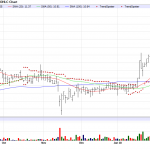In her testimony to the Congressional Economic Committee on November 29, 2017, the Fed Chair Janet Yellen said that the neutral rate appears to be quite low by historical standards. From this, she concluded that the federal funds rate would not have to increase much to reach a neutral stance.
The neutral rate currently appears to be quite low by historical standards, implying that the federal funds rate would not have to rise much further to get to a neutral policy stance. If the neutral level rises somewhat over time, as most FOMC participants expect, additional gradual rate hikes would likely be appropriate over the next few years to sustain the economic expansion.
It is widely accepted that by means of suitable monetary policies the US central bank can navigate the economy toward a growth path of economic stability and prosperity. The key ingredient in achieving this is price stability. Most experts are of the view that what prevents the attainment of price stability are the fluctuations of the federal funds rate around the neutral rate of interest.
The neutral rate, it is held, is one that is consistent with stable prices and a balanced economy. What is required is for Fed policymakers successfully targeting the federal funds rate toward the neutral interest rate.
This framework of thinking, which has its origins in the 18th-century writings of British economist Henry Thornton,1 was articulated in the late 19th century by the Swedish economist Knut Wicksell.
The Neutral Interest Rate Framework
According to Wicksell, there is a certain rate of interest on loans, which is neutral in respect to commodity prices, and tend neither to raise nor to lower them.
According to this view, the main source of economic instability is the variance between the money market interest rate and the neutral rate.
If the market rate falls below the neutral rate, investment will exceed saving implying that aggregate demand will be greater than aggregate supply. Assuming that the excess demand is financed by the expansion in bank loans this leads to the creation of new money, which in turn pushes the general level of prices up.













Leave A Comment